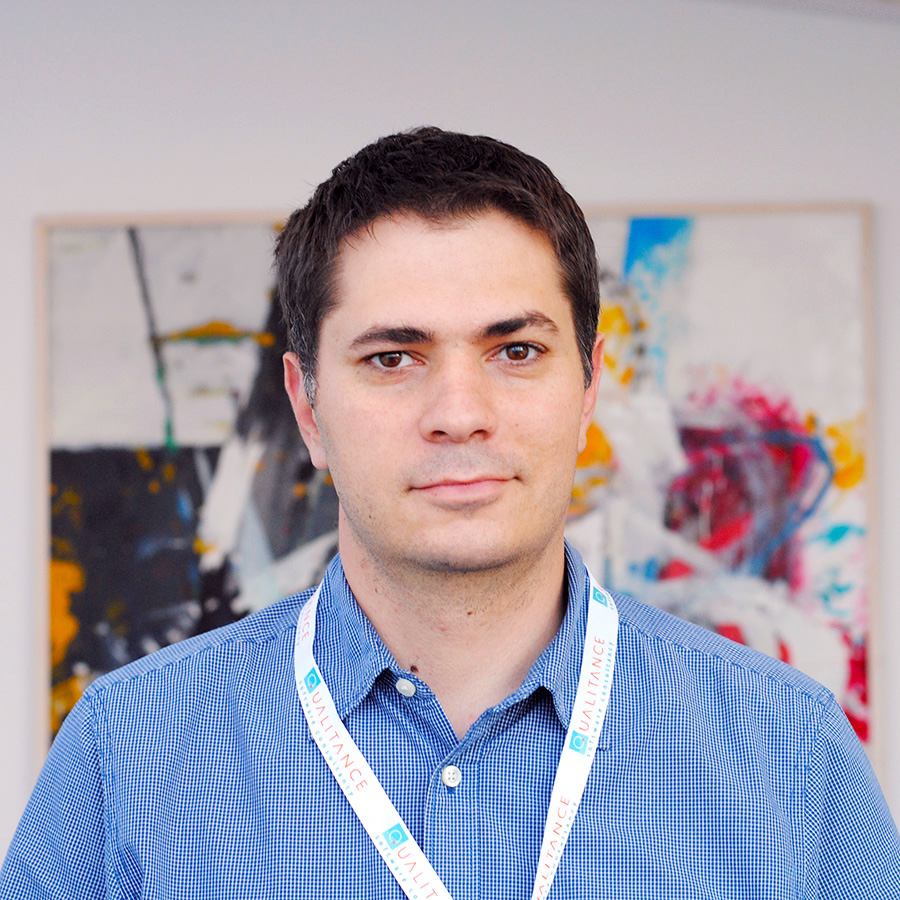In 2007, we set out to build a company engaged in improving and innovating software. In order to do this it was important that we build the culture and environment to support this growth. We devoted ourselves to the details – every line of code, the development and advancement of our employees. Quality assurance in all areas of our business was paramount.
After 6 years of experience and growing QUALITANCE to over 100 staff, we felt good about our mission. Then, in 2013, we learned a new practice that has transformed the way we think about not just software development, but the company itself.
In 2013, while in sunny San Francisco, I had the unbelievable chance to meet ‘Tom Chi’. Tom is one of the founding members of Google X, worked on Google Glass and the Google self-driving car – amongst a number of other exciting projects – and a huge proponent of rapid prototyping.
The minute we found out about this new technique we knew we’d found a tool to not only create good software, but make it also super-fast and incredibly cost-efficient.
The only way to deliver good software before this discovery was basically just throwing a lot at the product in terms of QA effort. Overhead of both cost and effort increased, but it was worth it and still massively reduced overall rework and production defects resulting in great software. Rapid prototyping is an amazing hack to significantly reduce this overhead.
A Deeper Look at Rapid Prototyping
Rapid prototyping is not a software methodology. It’s rather a school of thought that says “doing is the best way of thinking”. Instead of endlessly debating hypothetical solutions, writing presentations and arguing on hypotheses and guesses, rapid prototyping allows you to instantly prove whether an approach works or doesn’t. Make no mistake – it’s less of a building tool, but rather a decision tool.
The system is super-intense. Teams that do continuous rapid prototyping get burnt out fast if they don’t alternate between RP and construction.
Keep in mind, this doesn’t mean you don’t need QA anymore: sure, RP fixes the basic concern, that you’re building the right product, fixes a part of the “building the product right” but it’s not the silver bullet. You still need solid QA to comb through and polish the product.
We use the RP approach not only in software, but also in other departments of our team, assuming it almost as the company’s philosophy.
The Rapid Development Process
Rapid prototyping had a massive impact on the speed and the quality of our product development. The most spectacular is on our MVP (minimum viable product) development. We work a lot with Silicon Valley entrepreneurs to take their ideas and turn them into products. We start from the proverbial napkin sketch and, together with the product owner, we ideate, iterate and ultimately deliver the MVP. It’s truly a magic process, it’s alchemy, creating something from nothing. Before rapid prototyping this process took about 6 months. Now, we’re able to successfully deliver MVPs from scratch to go live in just 6 weeks!
New Methods, New Mindsets
Apart from implementing rapid prototyping in the development phase, the mindset shift that it generated had four major impacts: The migration from the model of a single big team (development and testing) and breaking that up into smaller, more agile and more autonomous units, typically made up of two or three developers and one test engineers, called feature teams fully responsible for delivering a set of features. Overall delivery times decreased with up to 20% and the defect density dropped on average by almost a factor of two. Within the smaller feature teams, a more cohesive environment appeared. In these groups, people can connect better and work together faster. Our team became more open to interact with each other, more engaged and able to create valuable solutions together. It is a simpler structure, easier to coordinate and scale. It produces faster and more responsible decisions and better peer code reviews. The turnaround times accelerated and de-risked overall delivery.
The Future of QUALITANCE
Our vision is to educate more of the world about rapid prototyping and work towards making it an industry standard. This will transform the efficiency and effectivity of the software that the world uses. We hope to create a rapid prototyping course in the curriculum of major universities and set the next generation up with this powerfully successful tool. That’s why we invite you to try rapid prototyping on some software or perhaps any idea at all.
Join us and do your part in creating better products, a better workforce and better business.



Building Next Generation Web Platforms | QUALITANCE
Posted at 14:32h, 15 June[…] actually work with the new technologies than read about them and try to figure it out that way. The rapid-prototyping method that we use complements this perfectly because we are able to test new approaches and quickly […]